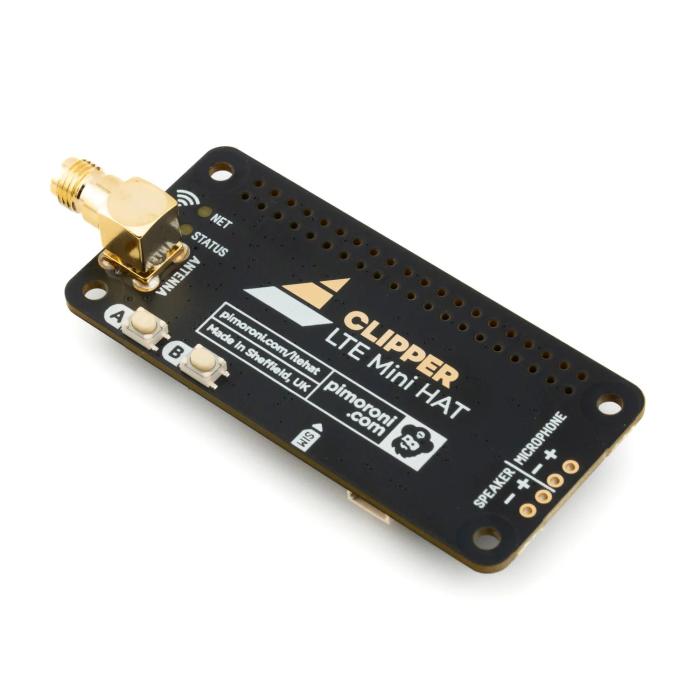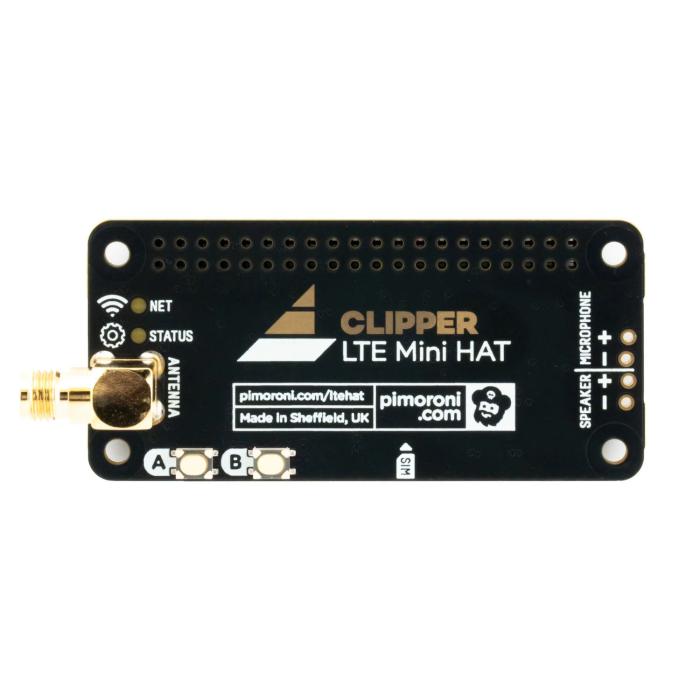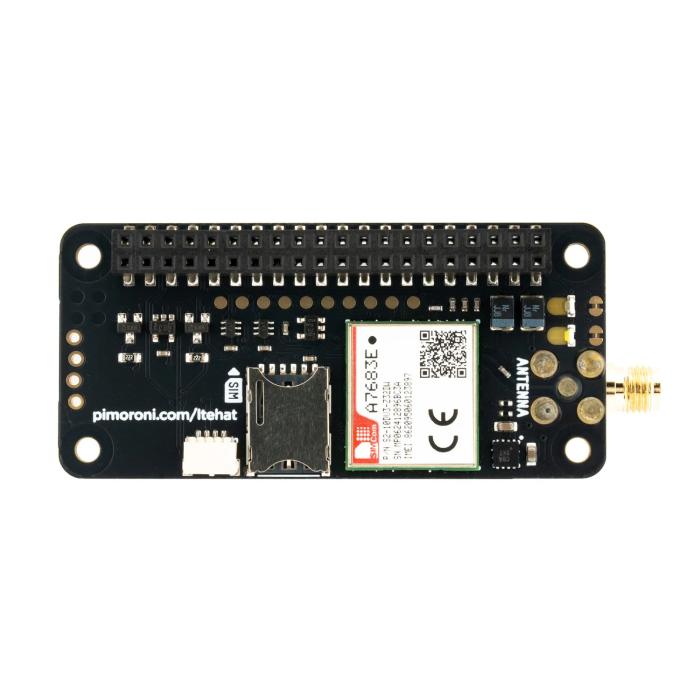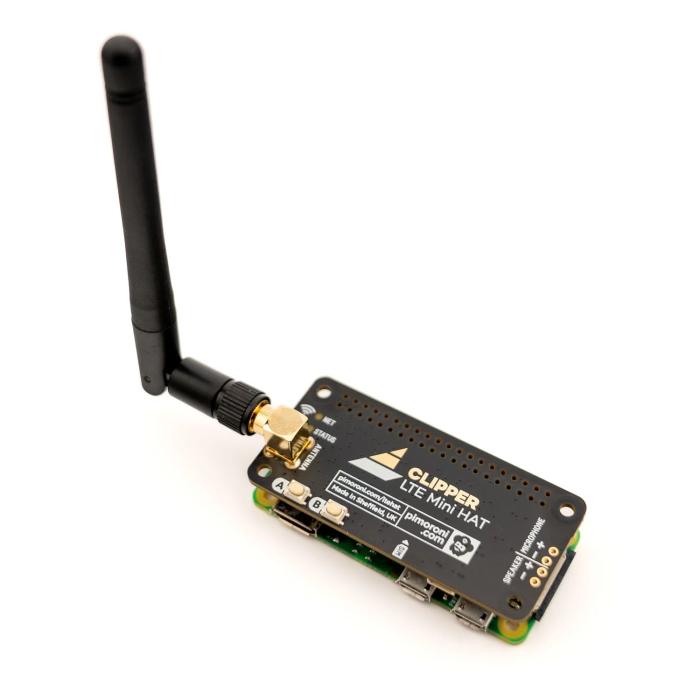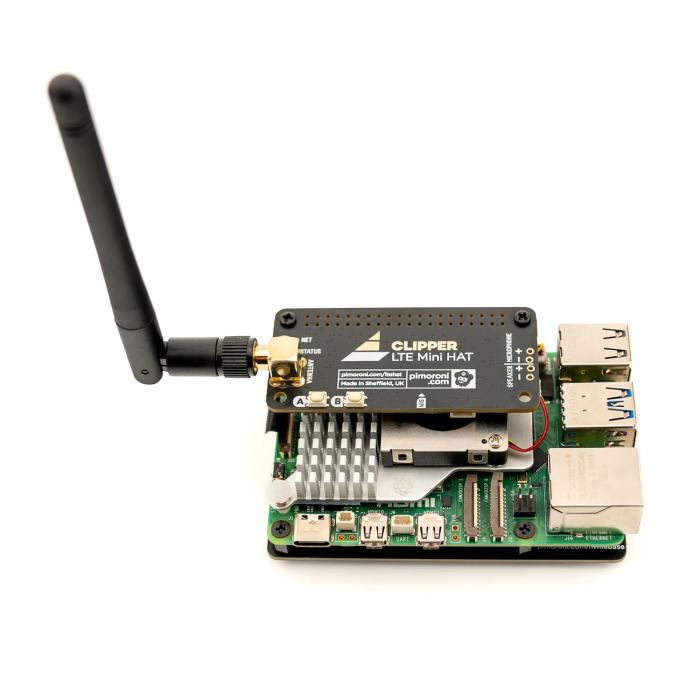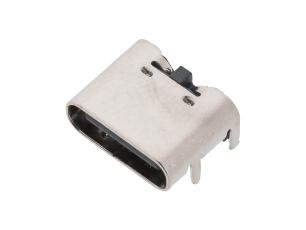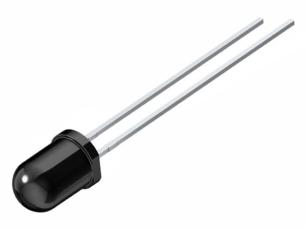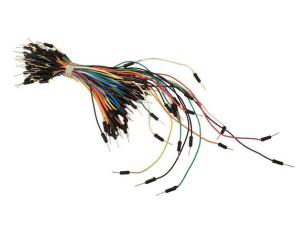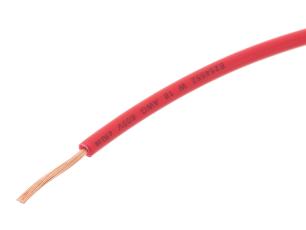Product description
Clipper enables your Raspberry Pi computer to send and receive data over 4G LTE mobile networks—perfect for remote or mobile projects.
The Mini-HAT version of Clipper includes a few enhancements for your Raspberry Pi:
- LED indicators to display the LTE module's activity.
- Two user buttons and a Qw/ST connector, allowing easy connection of breakout boards with a Qwiic or STEMMA QT connector using one of these cables.
- The Clipper HAT Mini features an SMA connector for attaching an antenna. Antennas are sold separately.
Features
- SIMCom A7683E 4G LTE module
- Frequency bands: LTE-FDD B1/B3/B5/B7/B8/B20/B28
- Control via AT commands (SIMCom AT-Command Manual)
- SIM card slot
- Two user buttons (labeled A and B)
- LED indicators for STATUS and NET
- SMA connector for antenna attachment
- Qw/ST connector (Qwiic / STEMMA QT) for connecting I2C breakout boards
- Unpopulated headers for connecting speakers and a microphone
- Pre-soldered header sockets for connecting to a Raspberry Pi
- No soldering required (as long as your Raspberry Pi has a 40-pin header connection).
- Compatible with Raspberry Pi computers
- Schematic diagram included
- Raspberry Pi and accessories are sold separately.
Regional Compatibility
The 4G LTE module on Clipper supports the following frequency bands:
B1/B3/B5/B7/B8/B20/B28
Good to Know:
- Dimensions: 65 x 30 x 17 mm (L x W x H, including connectors). With a Pi Zero 2 W mounted using 10 mm spacers, the total height (including the antenna connector) is approximately 23 mm.
- Power Consumption (VDD):
- Idle: 17 mA
- Sleep mode: 0.12 mA - 1.63 mA
- Maximum transmission current: 700 mA (peak current only lasts briefly, and the 440 µF capacitors on the breakout help smooth the spikes).
- Typical current usage ranges between 50 mA and 100 mA.
- The LTE module has a sensitive undervoltage circuit, so if it shuts off randomly or during certain tasks, check your power supply.

